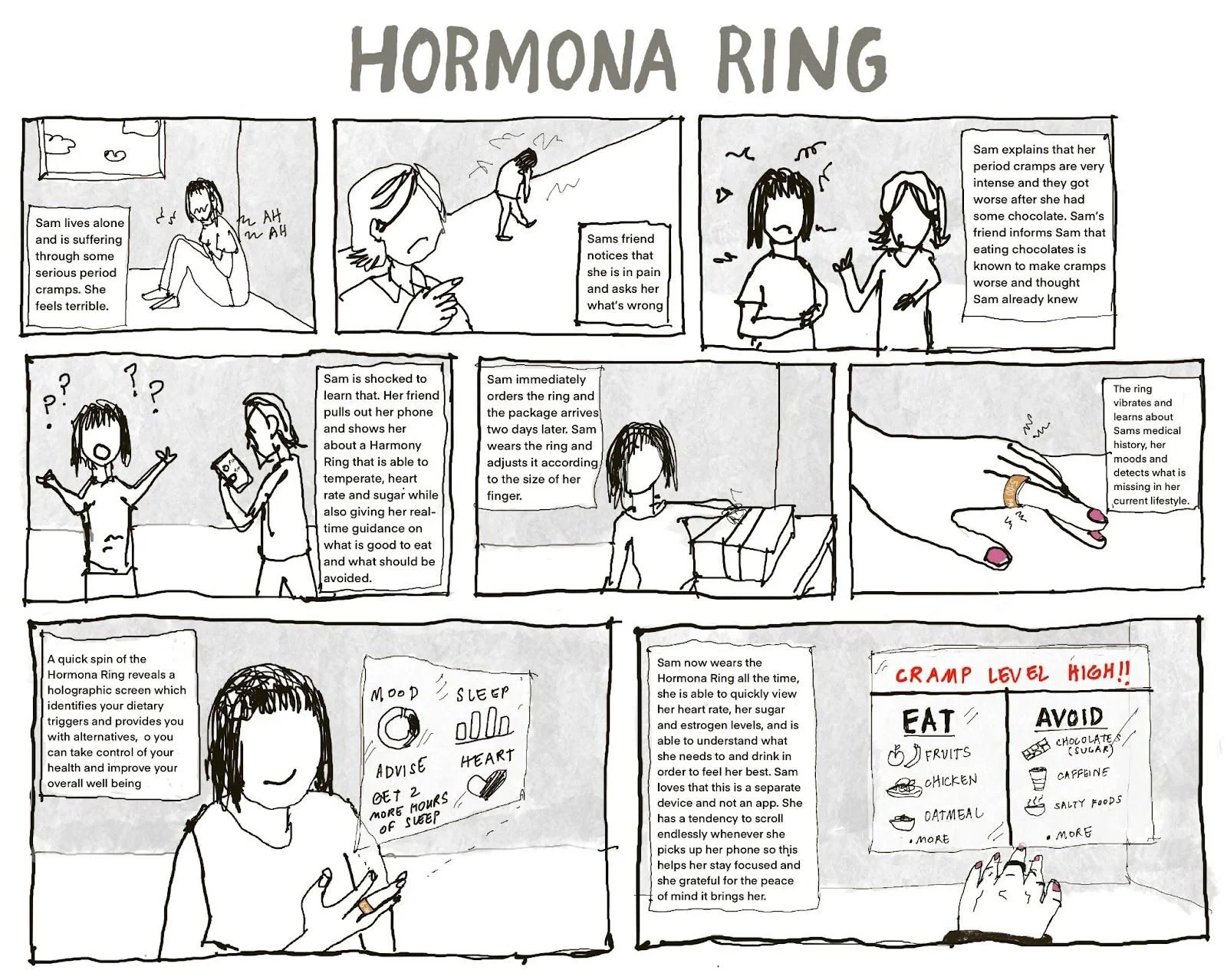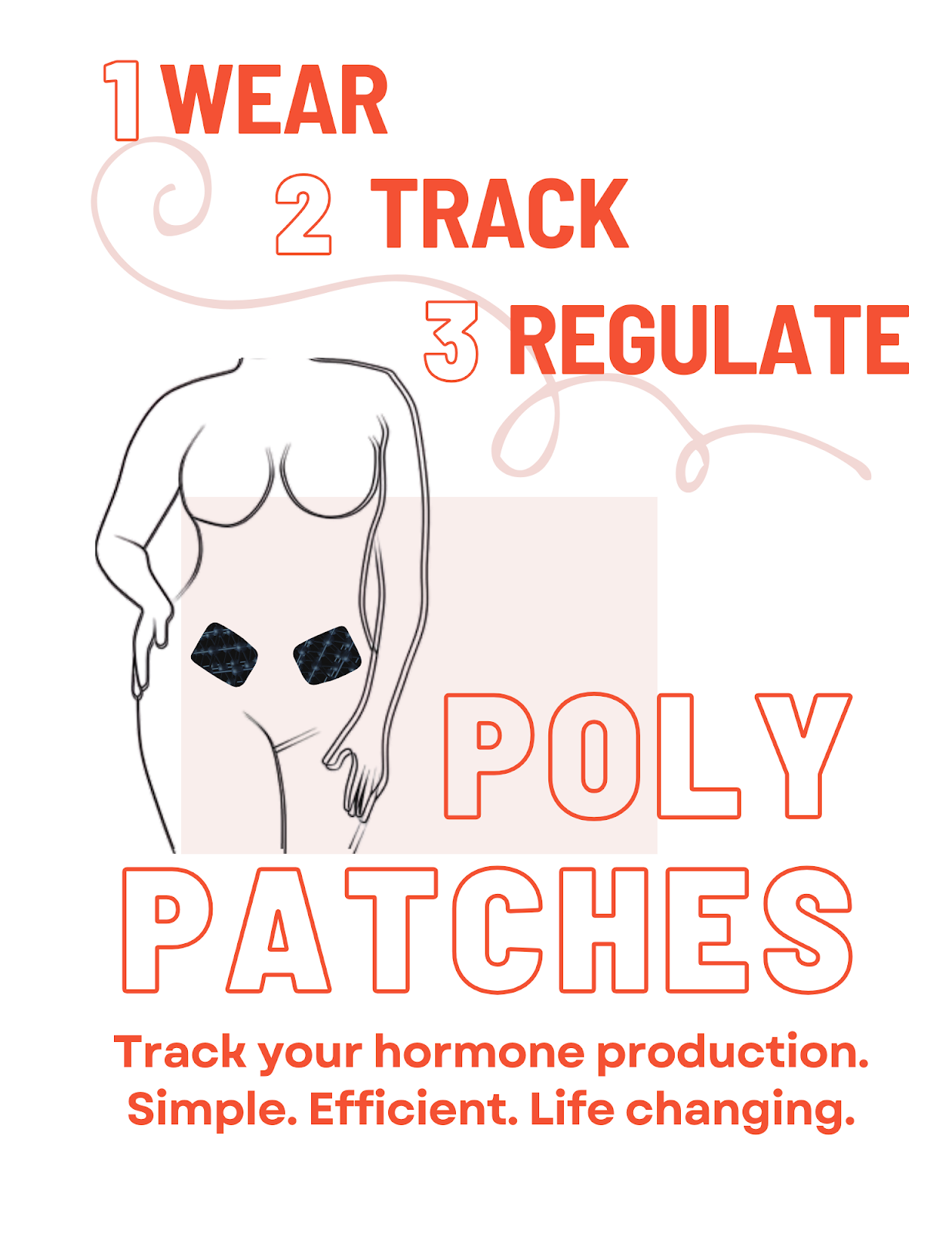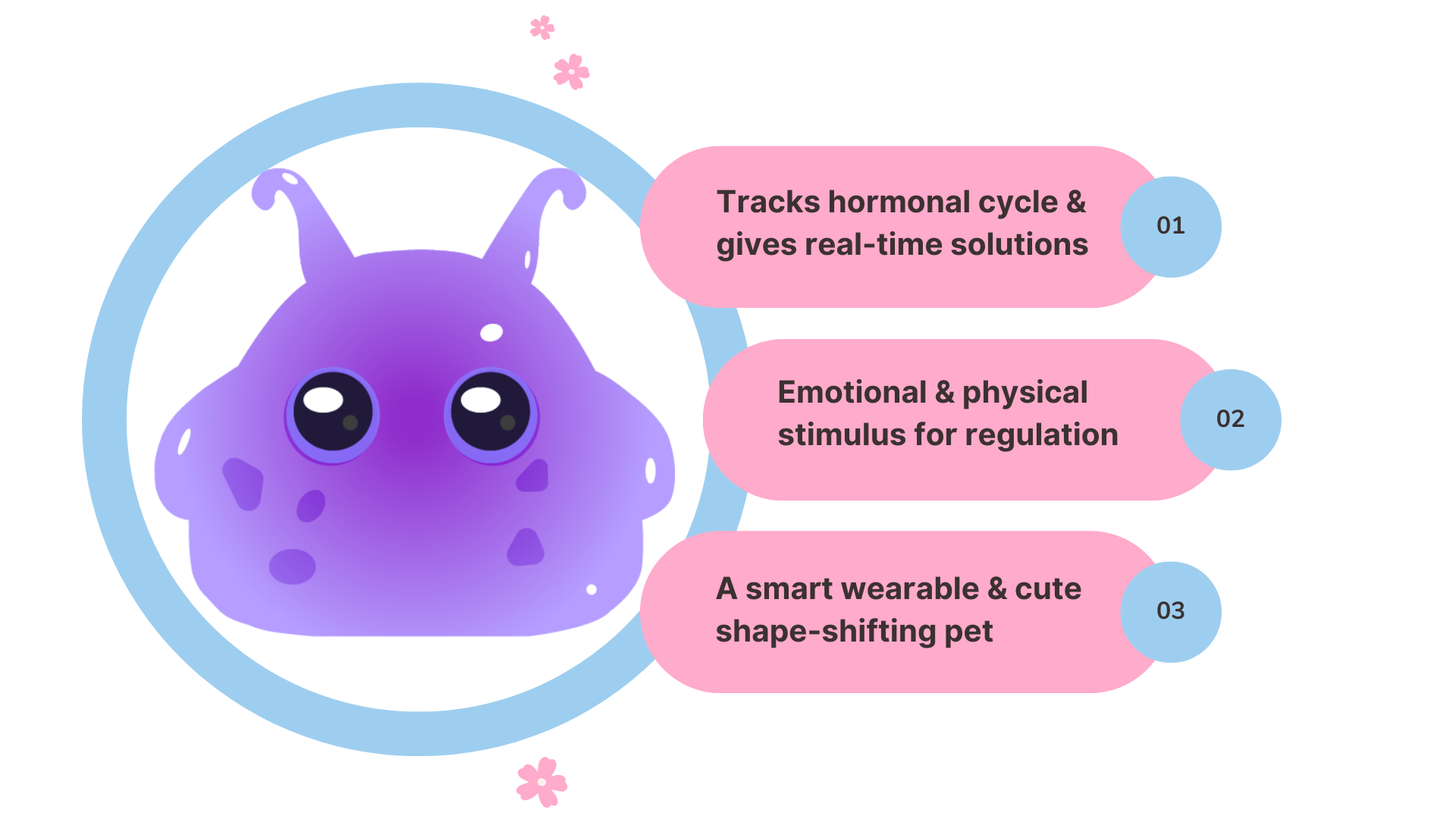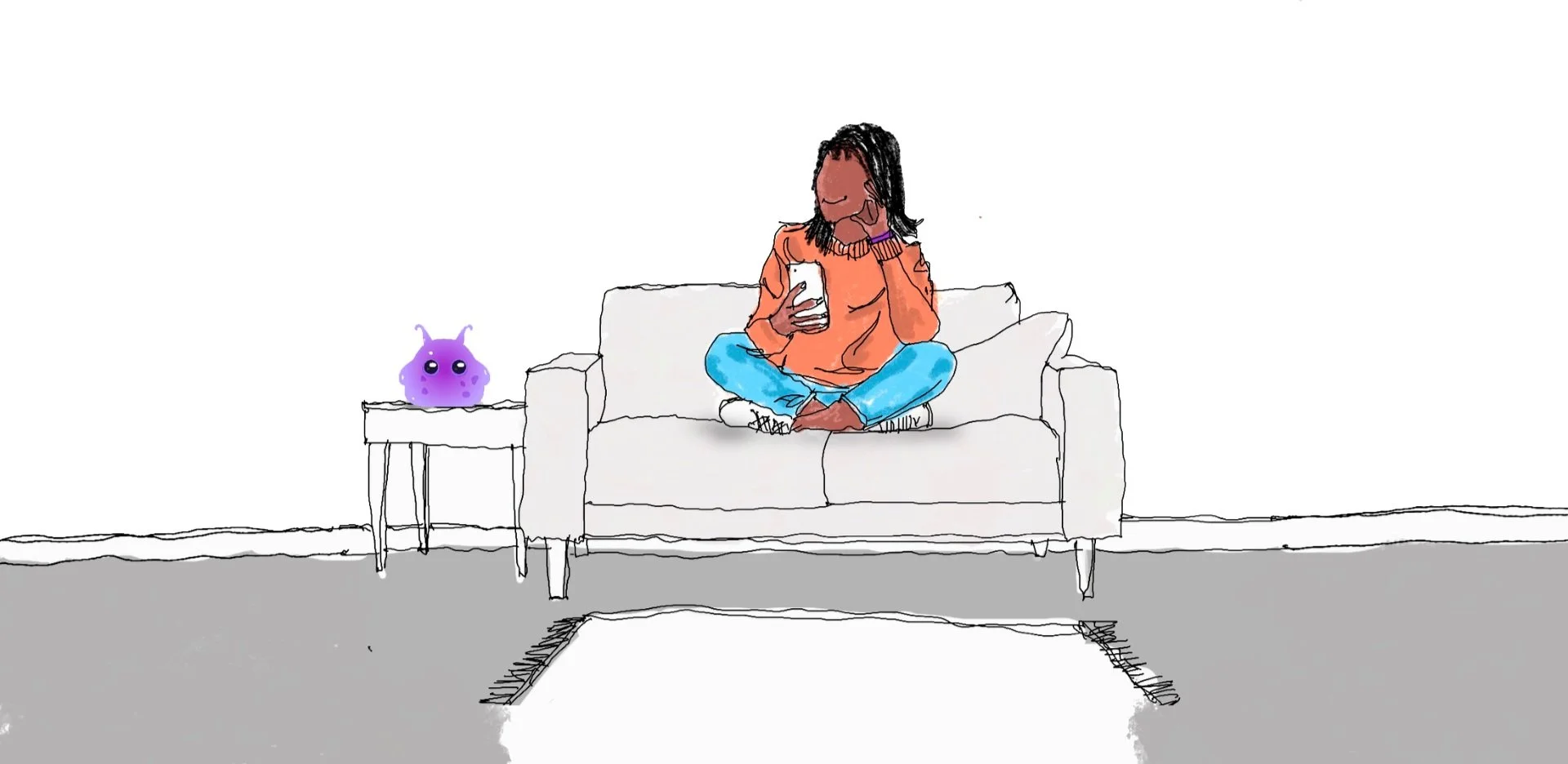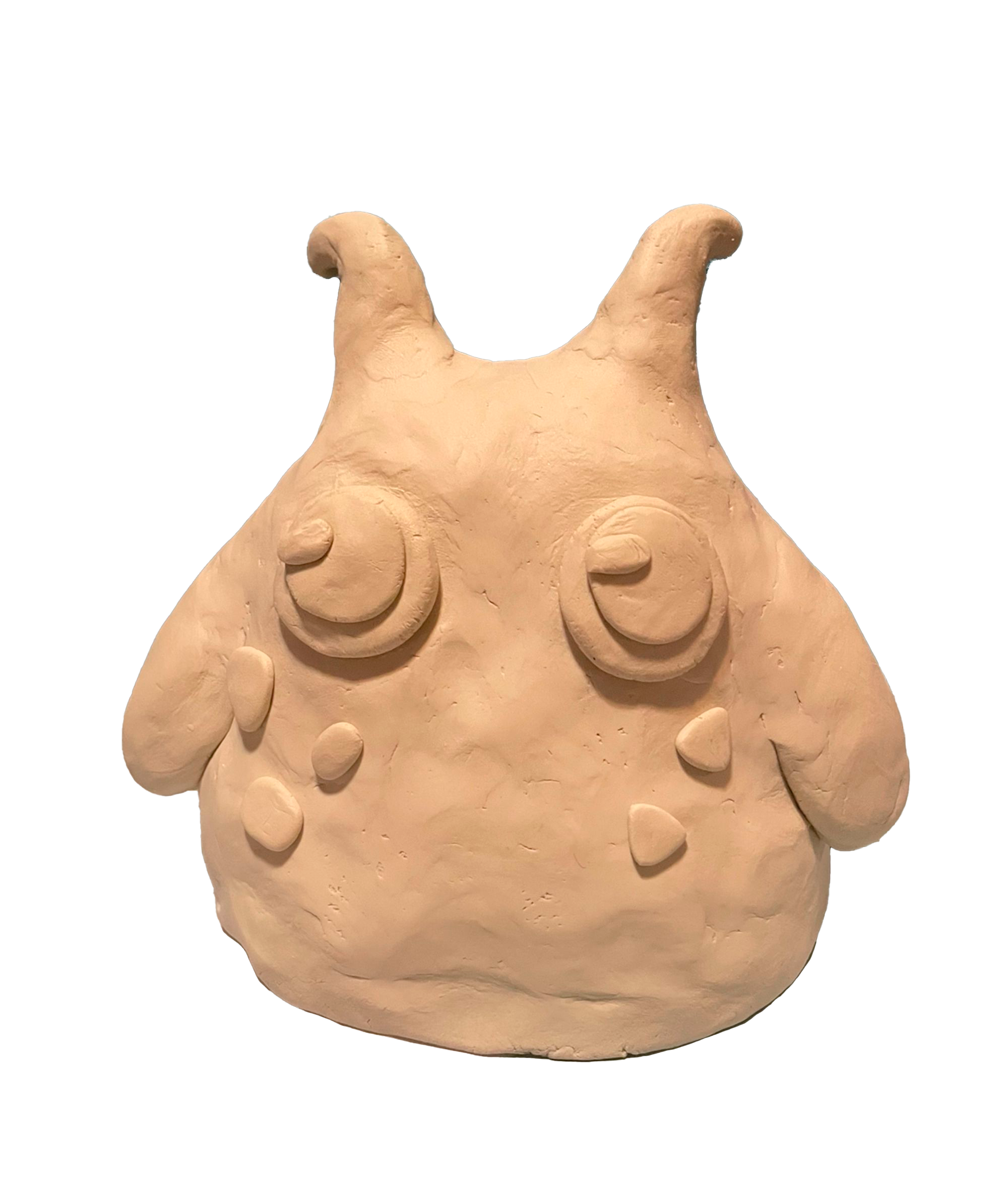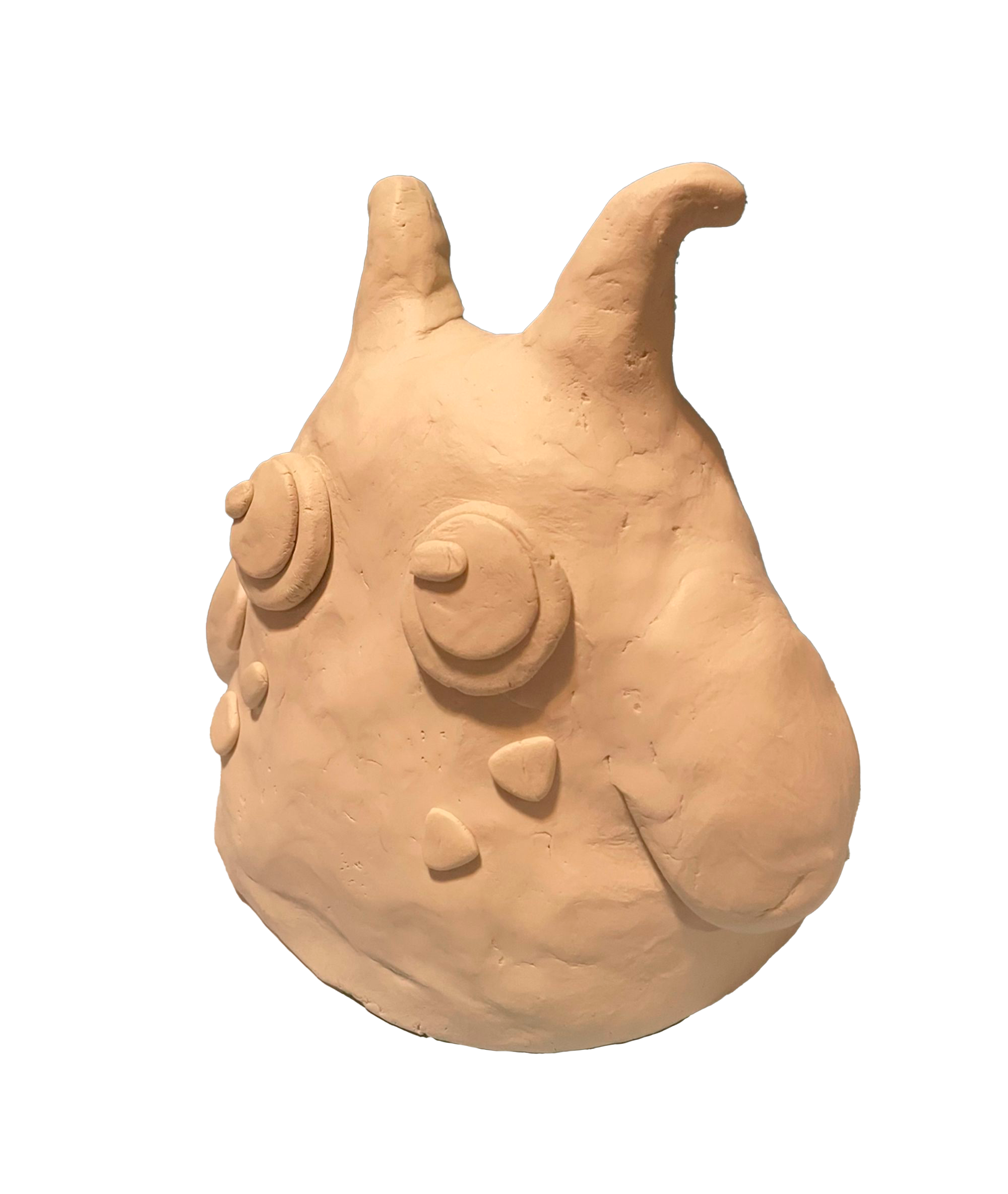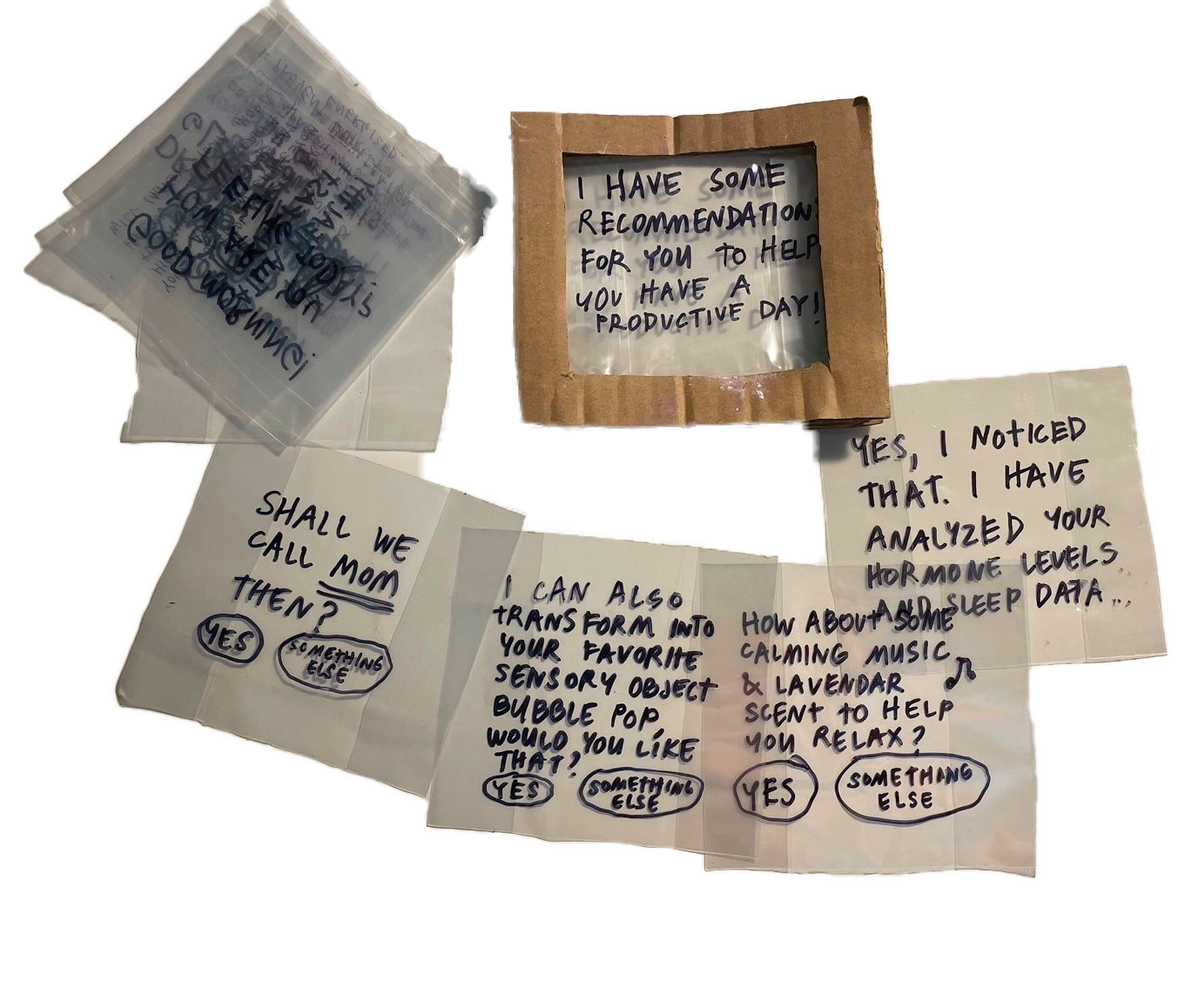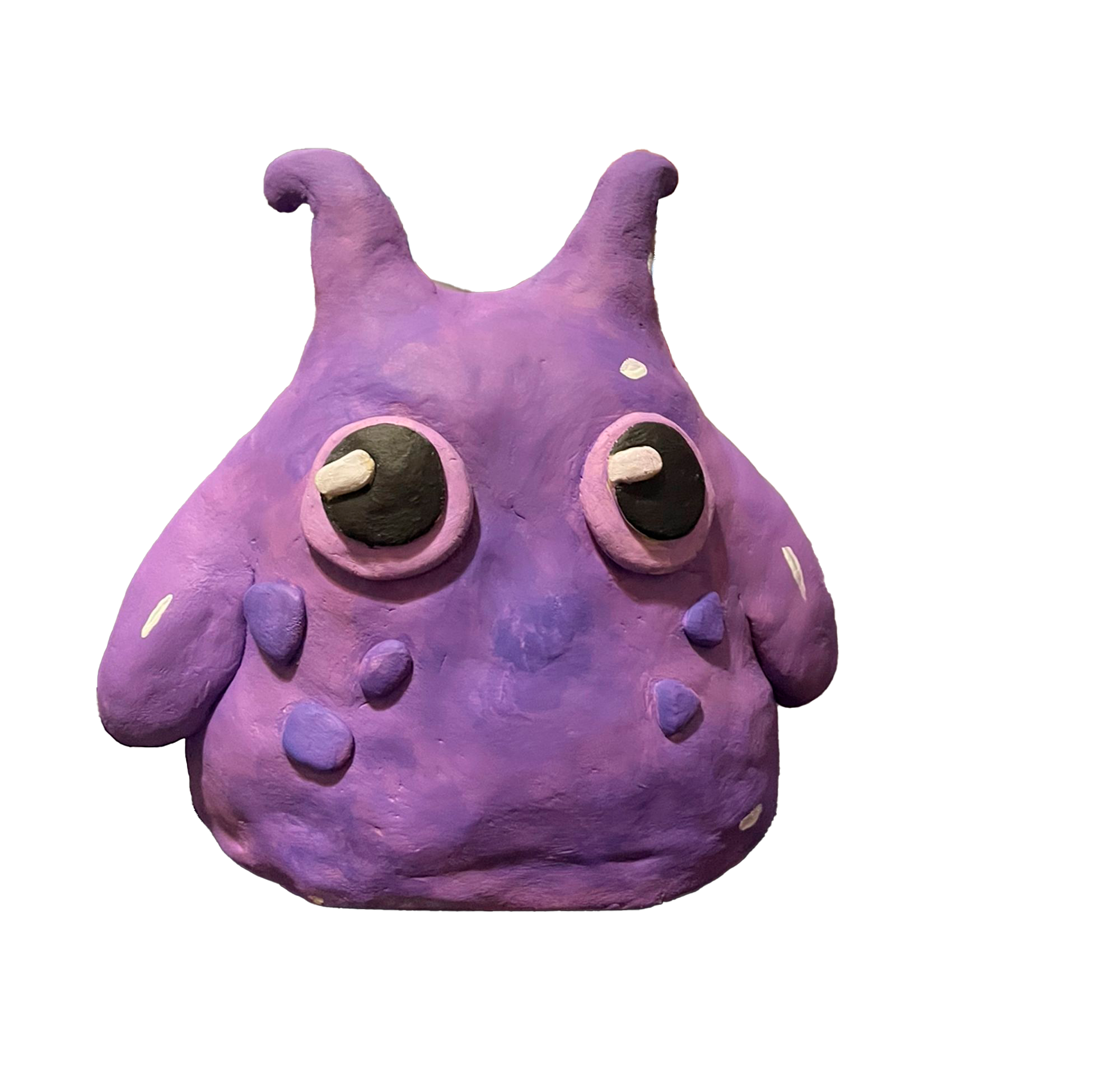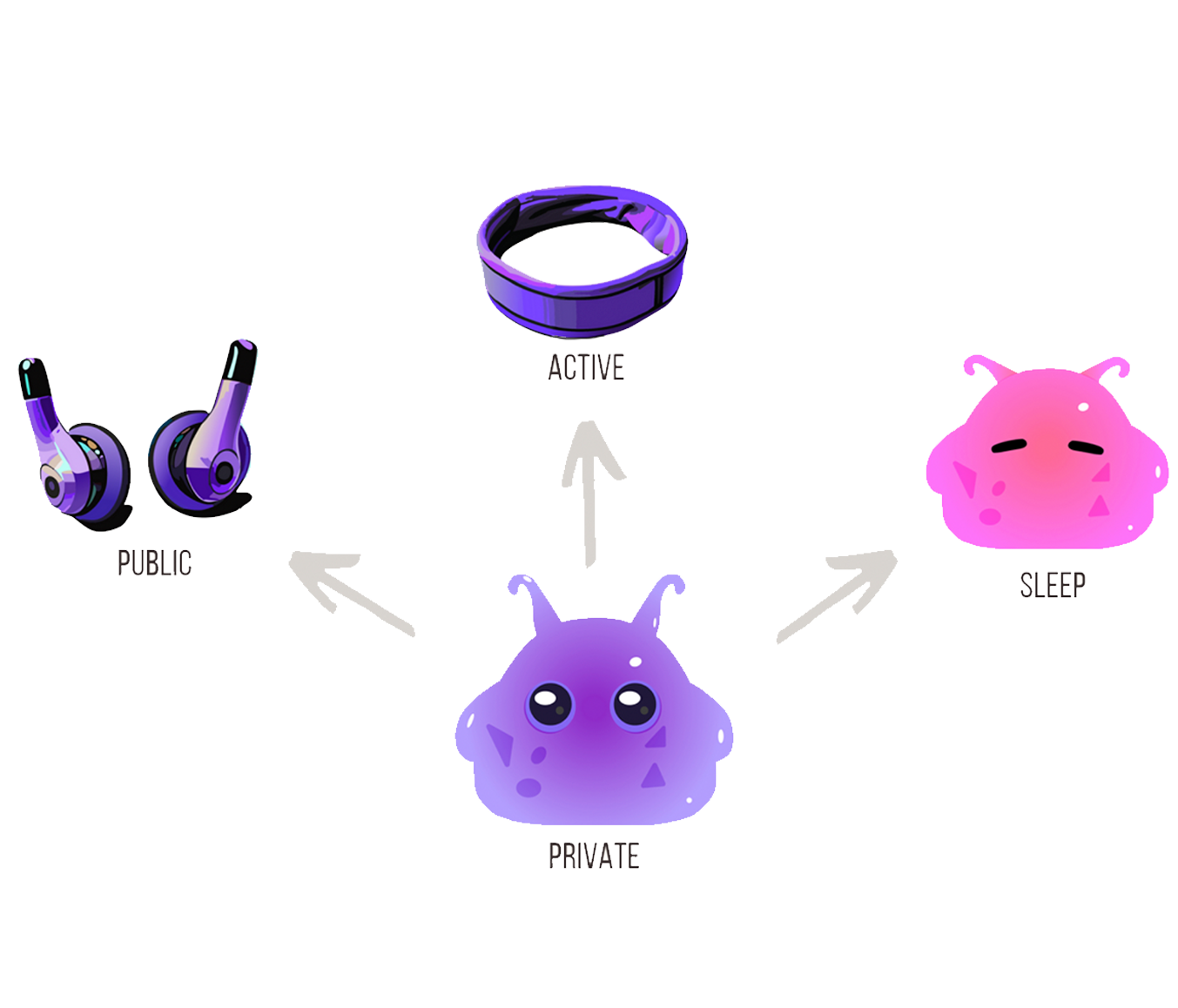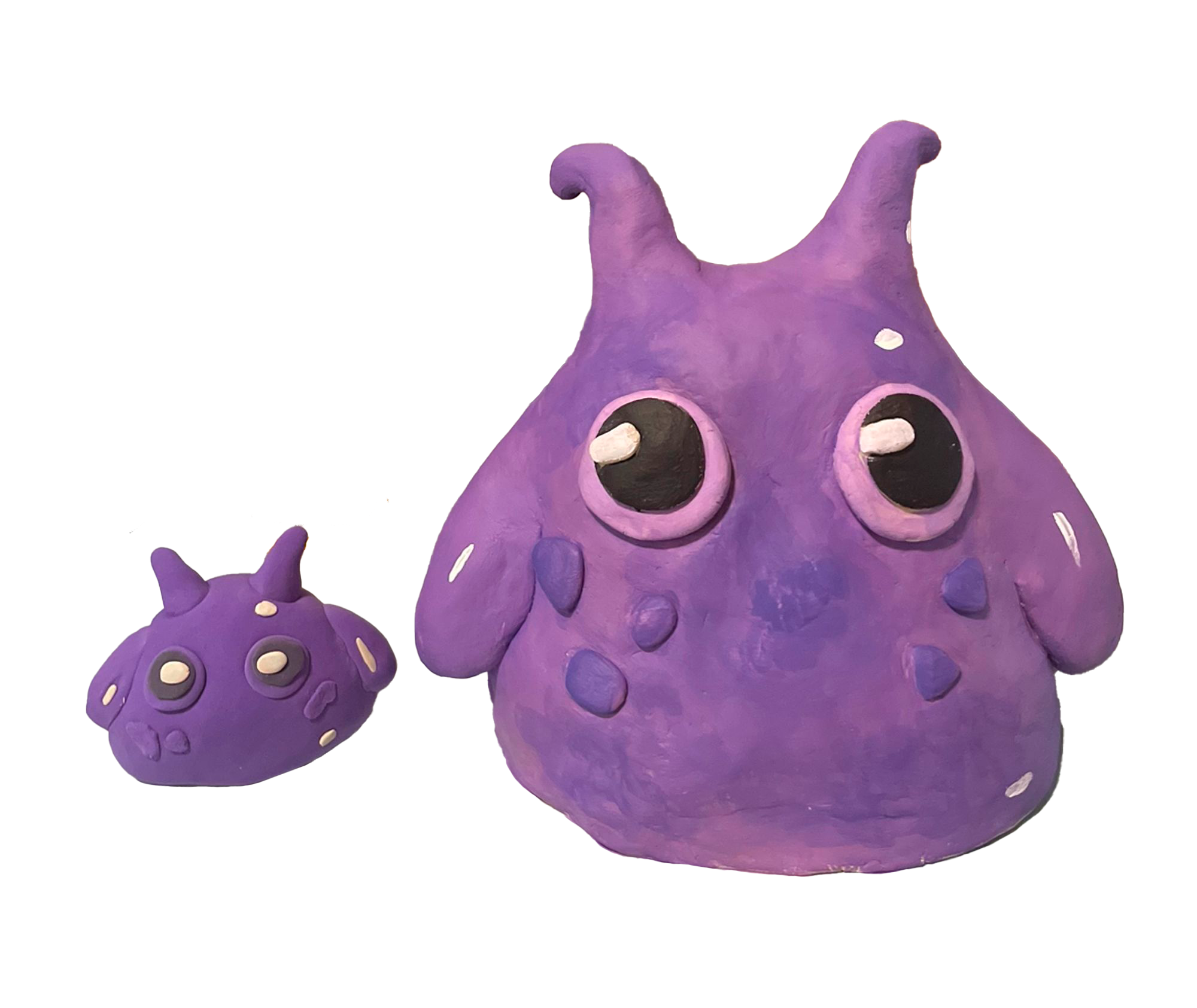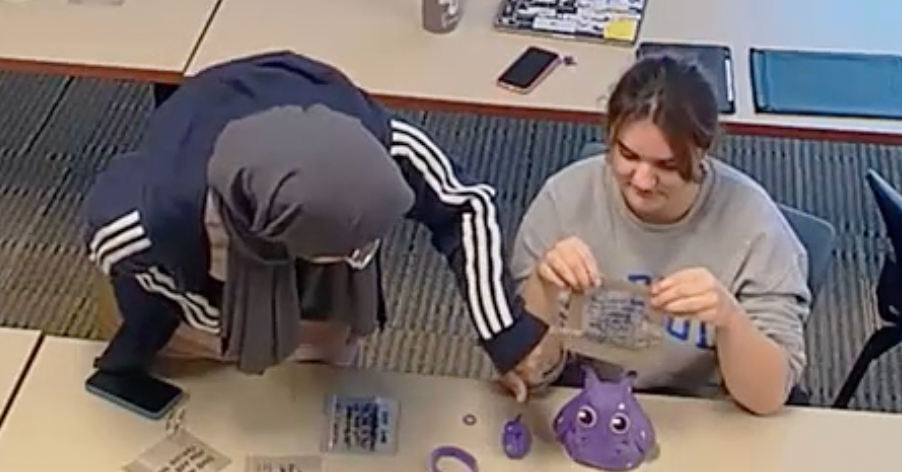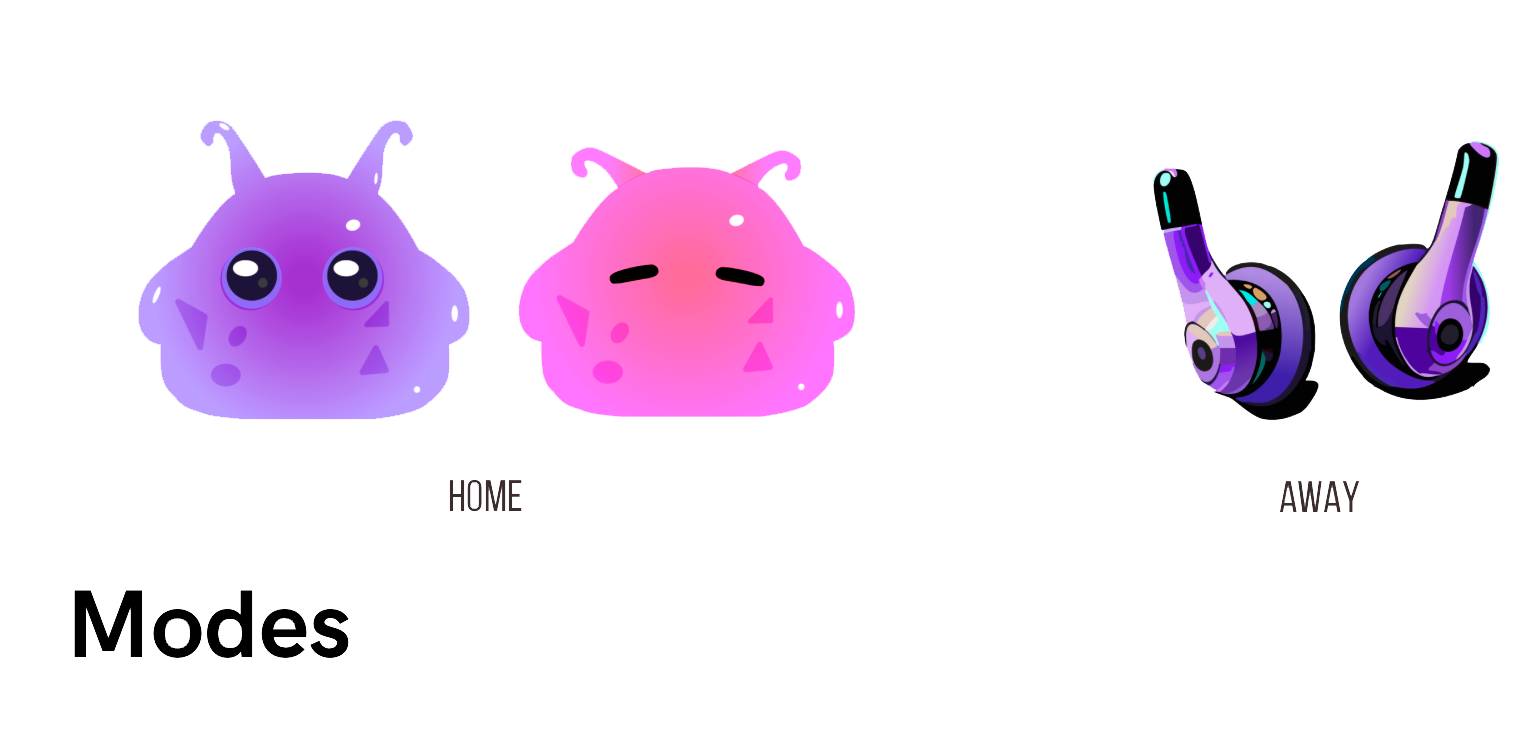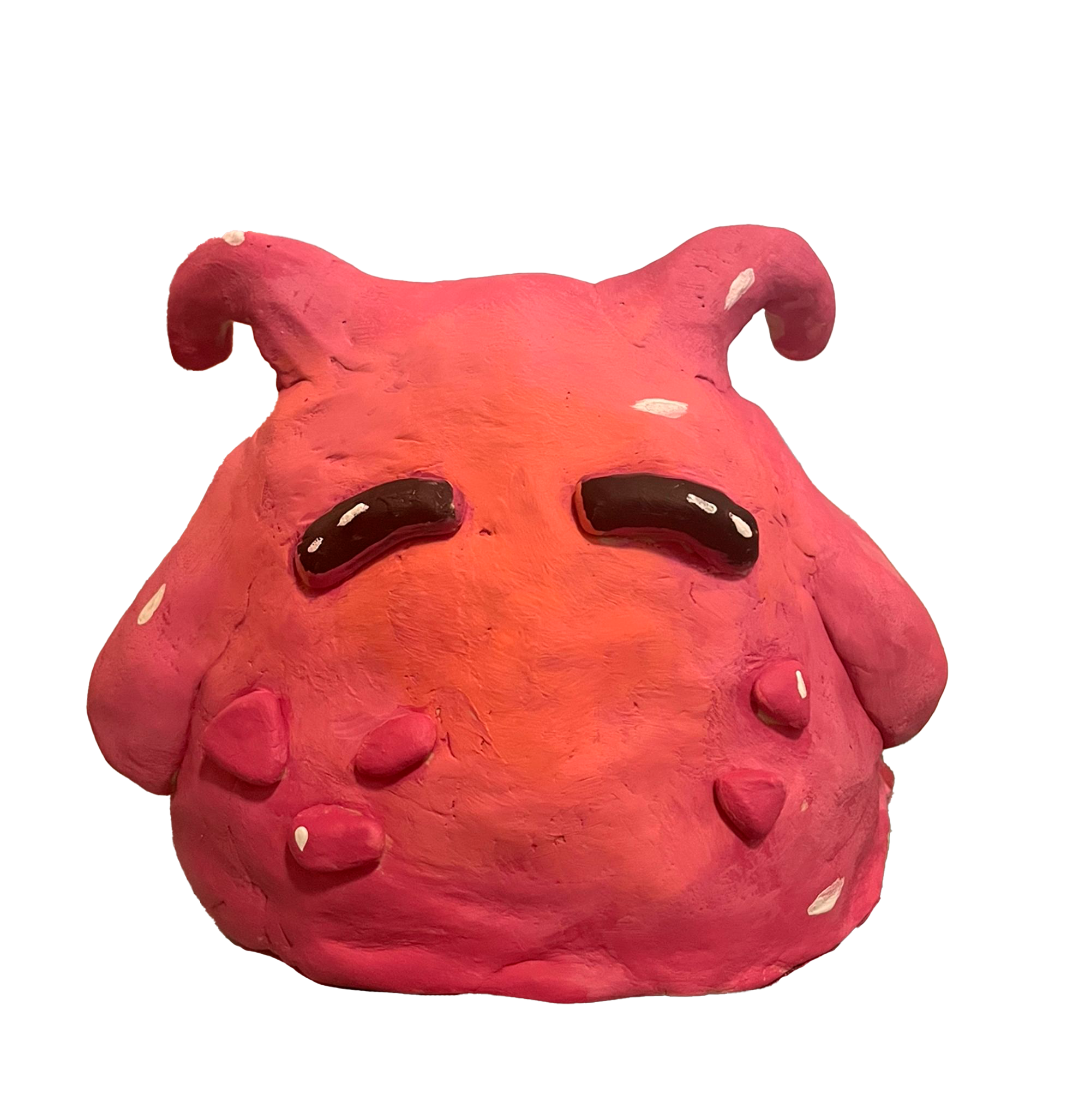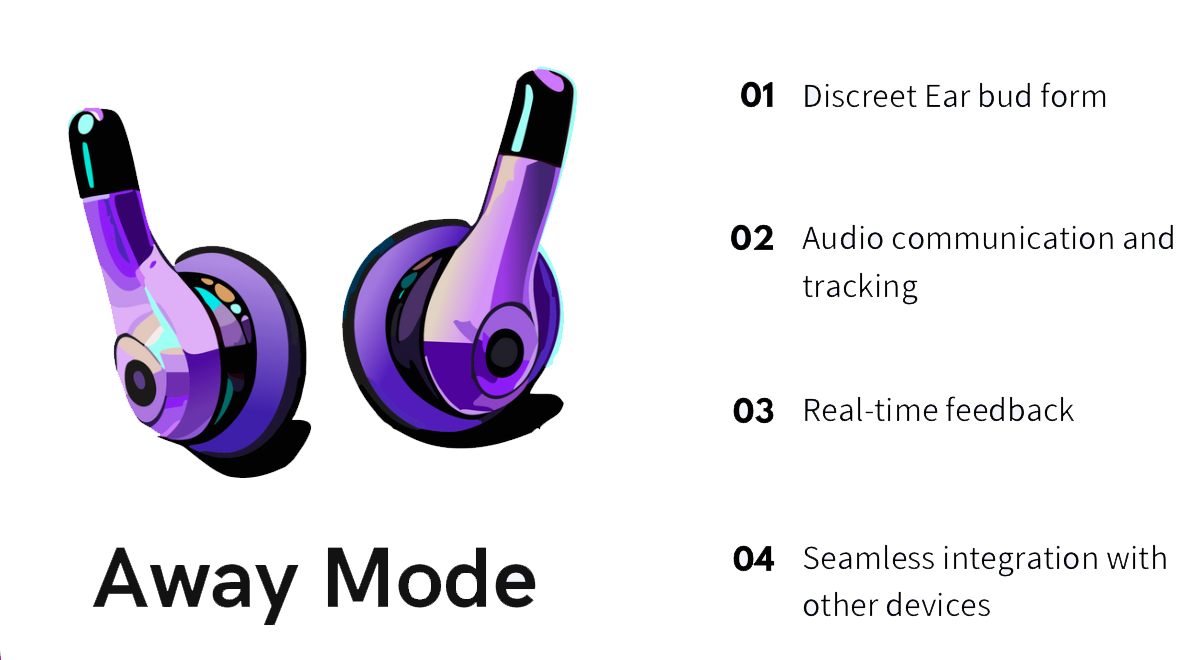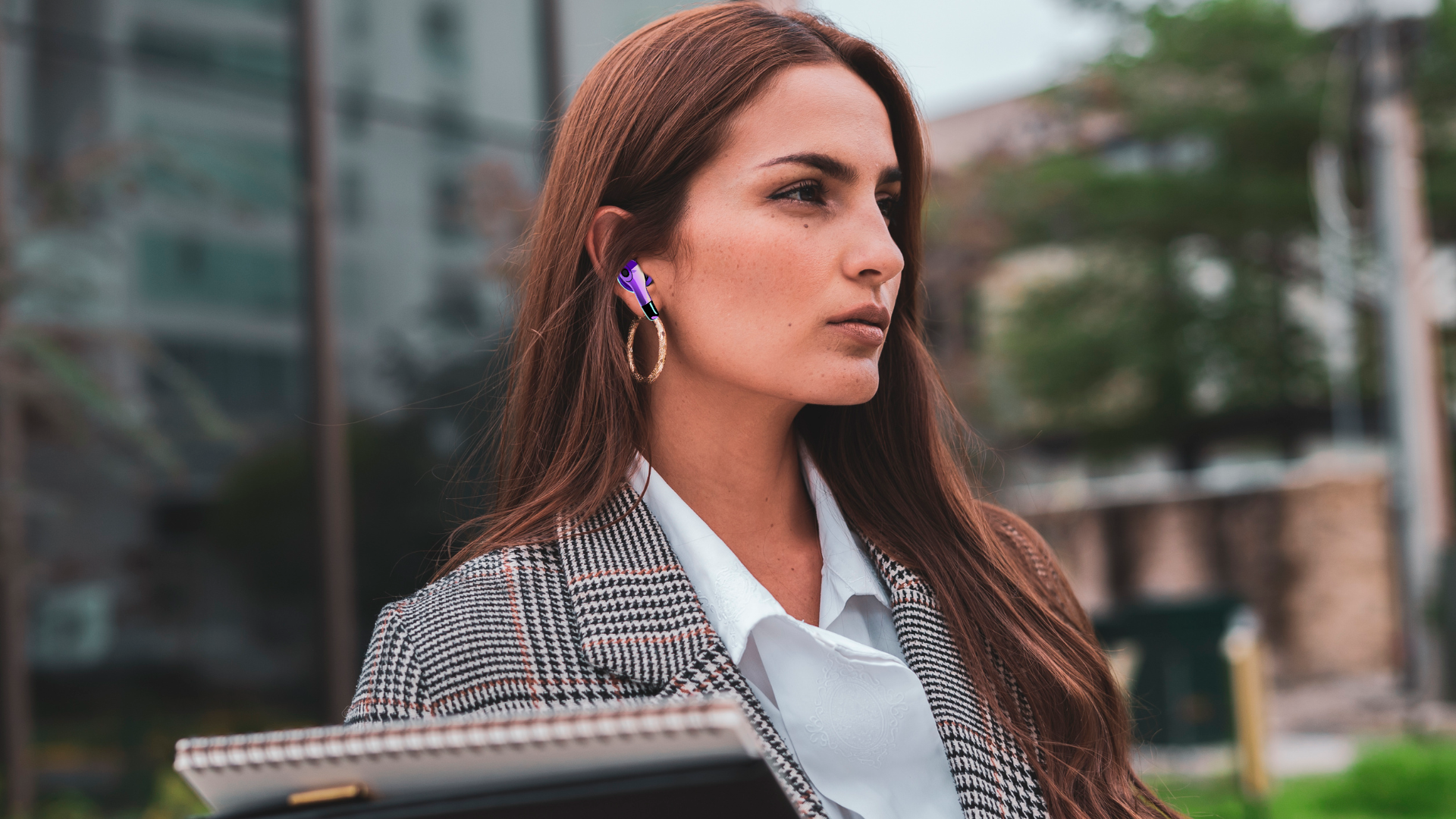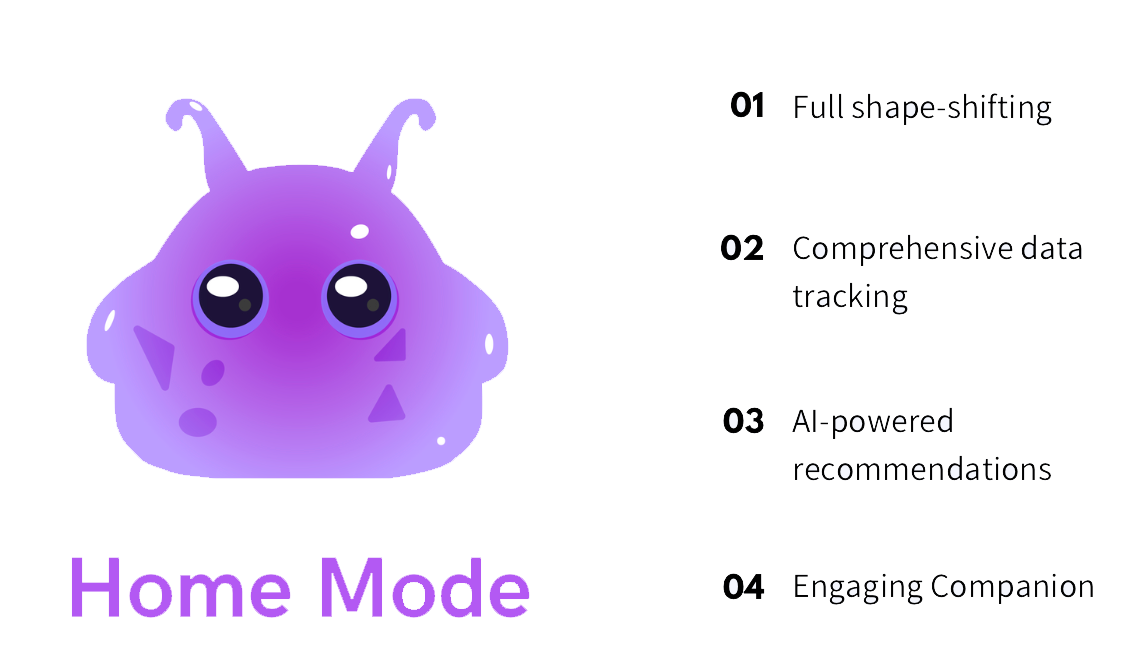Emerging Technology
-
Exploratory Research
-
Human Centered Design
-
Health & Wellness
-
Emerging Technology - Exploratory Research - Human Centered Design - Health & Wellness -
Huffle
How can non-traditional technology help women better manage their hormonal disorders?
Huffle is a shape-shifting hormone tracking companion that helps those with hormonal imbalances to identify patterns and trends in their natural cycle and provides personalized recommendations to improve their daily lifestyle and wellbeing.
Research indicates that 80% of women experience some form of hormonal imbalance, with severe cases often linked to conditions such as premenstrual syndrome (PMS), polycystic ovary syndrome (PCOS), and menopause. While symptom management typically relies on prescription medication, significant improvements can be achieved through targeted lifestyle changes.
Amid the widespread lack of awareness surrounding hormonal health, Huffle offers a smart wearable solution that tracks hormonal fluctuations and provides real-time, personalized recommendations to support women’s health journies.
Overview
My creative process is adaptable to the unique demands of each project, following a structured progression: inquiry and research, concept and narrative development, and iterative refinement through feedback.
For this project, the development of the design concept was a priority, as it involved exploring future technologies that are not yet accessible and striving to make them both realistic and beneficial to users. Additionally, the concept narrative had to be compelling to clearly convey how these futuristic technologies could be effectively utilized. Three iterations of prototypes were developed based on a rigorous feedback before formalizing the fourth and final prototype.
Project Details
Project Duration: 10 weeks
Collaborators: Humaira Tasneem
Key Takeaways
exploratory research & human centered design
prototyping futuristic technology
conceptual narratives
rigorous iteration & prototyping schedule
Inquiry & Research
Research Question: How can non-traditional technology help evaluate and manage various hormonal imbalances and disorders?
To gain a deeper understanding of the challenges women face with hormonal imbalances, secondary research was conducted, exploring primary sources for insights into hormonal data and existing technologies that could offer potential solutions. Aside from standard menstrual cycle tracking apps, innovative wearables for diabetics are the only closely related technology offering real-time tracking. This research was followed by informal primary research to gather firsthand perspectives from diverse women dealing with a range of hormonal imbalances.
Informal Primary Research
Thematic Analysis (4 interviewees)
Uncertainty and Confusion: All interviewees expressed some level of uncertainty about their hormonal conditions.
Impact on Daily Life and Emotional Well-Being: All interviewees noted the significant impact their hormonal imbalances had on their daily routines and emotional health.
Lack of Information and Need for Better Guidance: Many interviewees discussed feeling inadequately informed. Many felt that their doctors hadn’t provided enough clear guidance in regards to lifestyle management.
Frustration with Existing Management Approaches: Many interviewees mentioned frustration with the current way they manage their hormonal imbalances, feeling like there must be better methods available.
“Sometimes I leave the appointments feeling more confused... there’s so much to remember, and I’m not sure if I’m doing everything right.”
“I wish there was a more straightforward way to understand what’s going on with my hormones.”
Concept & Narrative
To begin developing a solution that addresses our users' needs, our team created three distinct concept stories. Each story presented a narrative illustrating how the proposed solution would tackle the users' pain points, accompanied by visual representations.
These concept stories were then used in a follow-up round of user interviews, where women with hormonal imbalances provided feedback on their preferences and potential concerns with the conceptual solutions.
Concept 1
You've been struggling with persistent drowsiness despite getting enough sleep, and during a doctor's visit, you're told it's a symptom of PCOS. You’re uncomfortable with the idea of taking more medication, but you're offered an alternative: hormonal tracking technology. The device consists of two small, flexible patches placed on your abdomen, tracking your hormone levels in real time. This data is accessible only to you through your smart device, providing insights into how your hormones impact your mood, energy, and wellness. After a month of tracking, the device offers personalized recommendations for lifestyle improvements. By following these natural suggestions, you experience better energy, mood, and productivity.
Concept 2
Conceptual Interview Analysis
6 interviews conducted
Conceptual Needs
Effortless Hormonal Tracking
“When it comes to menstrual cycle tracking, it’s very tedious, you have to put down all the information and sometimes I forget. This is great because it takes it from your body right away and adds it.“
Non-invasive Support
“Every medication you take there is always side effects, especially hormonal medication, so a device without medication that can still track and help regulate is revolutionary.”
Privacy & Flexibility
“If I'm measuring my hormones, I want to do it 24 hours a day and I don't want to take a hormonal companion outside.”
Refined Concept
Concept 3
You come home after a long day, feeling more irritable than usual. Your personal hormone assistant, "Snooch," greets you, already aware of your menstrual cycle, medical history, and physiological data through the Hormona system. Sensing your frustration, Snooch releases a calming scent. As you eat dinner, it tracks your mood and, knowing it’s the week before your period, offers gentle tactile comfort when you nod in approval. As you relax, it plays your favorite music, helping you drift to sleep. Snooch remains by your side, supporting you through every phase of your menstrual cycle.
Conceptual Concerns
Data privacy & Mistrust
“Quality of the data would be important.“ (Concept 2)
“How efficient is it and how sensitive is it with weight and skin and fat barrier effect how it's tracked?” (Concept 1)
Replacing Human Interaction
“I didn’t like that it was taking place of companionship and human touch“ (Concept 3)
Irritation & Uncomfortable
“I don’t like is having this thing on my body throughout the day. I might get used to it but I think I would be really uncomfortable.” (Concept 1)
Iterations & Feedback
Prototype 1
Leading Questions
How will the user’s data be kept private and safe?
How do we make the users trust that their data is safe?
How would the robot communicate the data?
How do we make such an advanced technology feel possible for users?
Challenges & Next Iteration
The most challenging aspect of this project was designing and prototyping a technology that does not yet exist to the public. Despite this challenge, our team successfully portrayed this advanced tech solution to users through engaging concept narratives, fun animations, realistic clay models, and live role plays. While some feedback regarding data accuracy and security was difficult to address within our prototypes, we leveraged these conceptual concerns to enhance the capabilities of our design solution.
In a future iteration of this project, we aim to explore the same research question—how might we help women better manage their hormonal disorders—by utilizing current emerging technologies.
For our first prototype, we will focus on visually representing the future technology. During concept testing, many questioned how a hologram would look and effectively communicate data. Security concerns were also raised but are beyond the scope of this prototype. We will use clay to create a sensory-friendly, moldable version of the Huffle character, showcasing its shapeshifting ability by presenting it in multiple forms, such as a bracelet or compact object. To simulate data tracking and the hologram feature, we’ll use clear plastic sheets with written data examples, flicking between them during testing to demonstrate user interaction with Huffle.
Prototype 2
Previous Workshop Feedback
What are the set modes that Huffle can transform into for specific environments and affordances?
How is the data that is presented to the user catered to their preferences?
How does the Huffle communicate the data within different modes?
What are the affordances of a hologram for our design? Are there other ways to present/communicate this data?
How will personalization come into play when it comes to not only presenting the data but how it is presented?
Prototype II of Huffle will focus on addressing questions from the first prototype by introducing customizable modes tailored to different environments and user needs. These modes allow users to set parameters for how Huffle communicates and presents data, enhancing the user experience. For example, "Public Mode" offers discreet functionality, "Sleep Mode" ensures silent operation, and "Active Mode" provides data for physical activity. By enabling users to switch between preset modes, Huffle becomes more versatile and user-friendly, offering personalized interactions without the overwhelm of unlimited transformations.
Private Mode Concept Story
You're at home feeling a bit low and moody when Huffle detects your elevated heart rate, indicating stress or anxiety. It suggests calming activities like deep breathing or listening to soothing music. As you follow the advice and listen to the music, your heart rate slows, and you start to relax, with your mood gradually improving. Grateful for Huffle’s support, you appreciate how Private Mode offers discreet, personalized assistance, allowing you to manage your well-being while protecting your privacy.
Sleep Mode Concept Story
As you prepare for sleep, you can activate Huffle's Sleep Mode to enhance your nighttime routine. You can set Huffle to emit calming ocean sounds and glow a gentle pink hue. Once activated, Huffle will enter sleep mode, monitoring your hormonal fluctuations and heart levels throughout the night, without relaying any data until you awaken. Upon waking, Huffle will provide a comprehensive summary of your sleep quality, along with relevant health insights and personalized recommendations for enhancing your overall well-being. Huffle’s Sleep Mode helps ensure restful sleep while supporting your health journey.
For the Final Prototype, we will showcase Huffle’s predictive capabilities through a skit that illustrates its interaction with a user. One team member will engage with the clay model of Huffle while another plays audio representing Huffle's voice, highlighting spontaneous interactions that predict moods, energy levels, and health concerns to mitigate hormonal fluctuations. The skit will demonstrate how Huffle is activated in various modes, addressing the need for discreet functionality in public settings while exploring subtle activation methods. This performance not only depicts real-life user interactions but also allows us to refine Huffle’s modes. Additionally, we will create a new clay model for the Home Mode demonstration and develop drawings that incorporate more scientific hormonal data based on Prototype III feedback. Visual motion images and GIFs will further help users visualize Huffle’s shapeshifting capabilities, enhancing accessibility.
Prototype 3
Previous Workshop Feedback
The feedback from Prototype II suggested that to better immerse users in the modes, it would be more effective to present the drawings in a larger slide deck with concept stories for each mode and clearly listed parameters. This would allow users to visually understand how each mode functions in different environments, rather than relying on verbal explanations.
For the next prototype, we plan to build on this feedback by incorporating the drawings from Prototype II into four distinct concept stories, enhanced with imagery of the Huffle modes in real-world scenarios, to create a more immersive experience and improve testing results.
Public Mode Concept Story
You've been working on a challenging project for hours and start to feel a bit low. In Public Mode, Huffle gently alerts you through your earbuds: "Your serotonin levels are approaching below normal. I recommend a snack rich in tryptophan, like turkey, eggs, or nuts. Tryptophan helps boost serotonin production in the brain." You head to the lunchroom, grab some nuts, and after a few minutes, feel more relaxed and focused. Grateful for Huffle’s timely advice, you appreciate how Public Mode helps you stay connected to your health and well-being, even during a busy day.
Active Mode Concept Story
As you head out for a run, you want to monitor your cortisol levels while listening to music. With Huffle in Active Mode, you can wear the armband and connect it to your personal headphones or Huffle’s Public Mode earbuds. While enjoying your music, Huffle will alert you if there are any concerns with your cortisol levels, letting you know if it's time to take a break from physical activity. Active Mode helps you stay informed and connected to your body's limits, ensuring you don’t overexert yourself, all while maintaining your privacy around others.
Prototype Testing
3 interviews conducted
Feedback Synthesis
Can each mode have a specific set of data that it focuses on communicating so each mode has a purpose?
How can people with hearing aids or people who are deaf interact with the different modes that require earbuds and sounds to communicate data?
I don’t want people walking in while I’m in private mode to listen to my data, especially if I live with other people so maybe it has motion detection or something.
How does Huffle know it is me using it?
How do we switch between modes?
Final Prototype


